My Tour Group
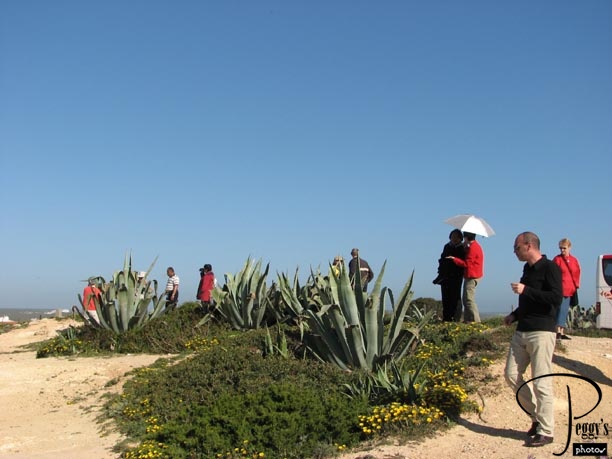
In lieu of a better photo to start this album, I am using a photo of my tour group that I took during the day. It was taken on an overlook near Cape St. Vincent, to where Globus offered an optional excursion.

My Tour Group
Our Itinerary
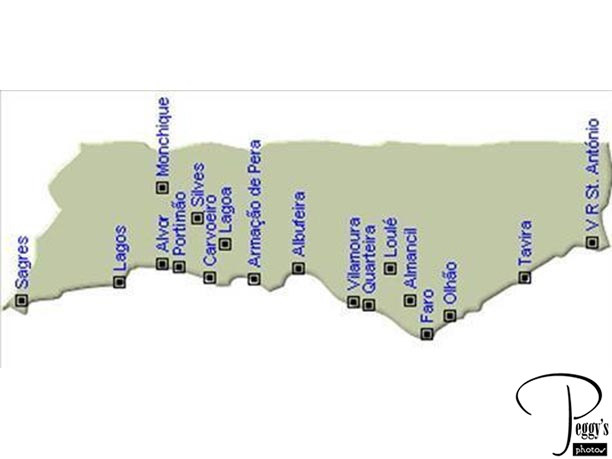
Map of the Algarve. Today, we left Vilamoura to drive to Cape St. Vincent, just past Sagres, and then back to Lagos. We had a local driver today as Manuel had to take a mandatory non–driving day. Rui asked the local driver to point out Aldeia do Golf, the complex that my parents’ once owned a house, on our way out of Vilamoura. It was the complex that I saw yesterday from the bus. So now I knew exactly where it was.

Our Itinerary
On the Road
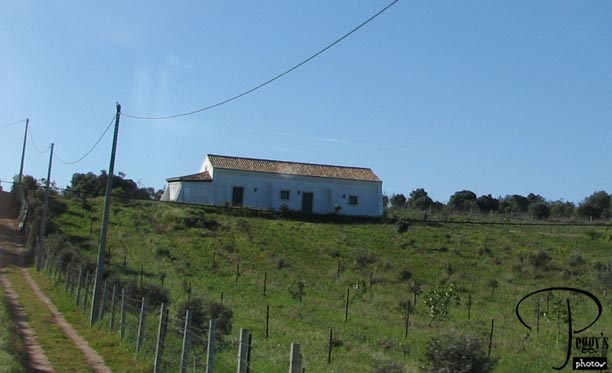
There are only two main roads along the length of the Algarve––the new road, a high–speed highway, and the old road, slower and going through an older section of the Algarve. There is no coast road, so each time you want to travel to a particular resort or town, you have to go off the main roads to get there. We took the new road which still had things of interest on it, such as this old Portuguese farm house.

On the Road
On the Road
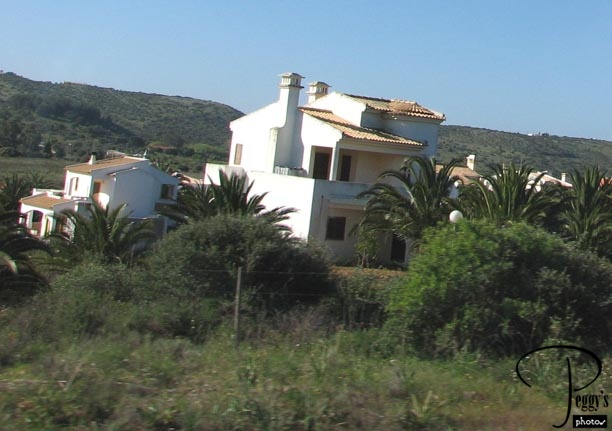
And also newer houses such as this.

On the Road
On the Road
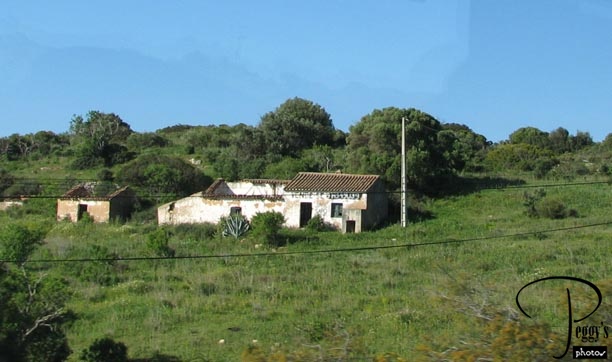
An abandoned farm house, one such as the one listed for 250,000 euros at a real estate office in Vilamoura.

On the Road
Cape Sagres
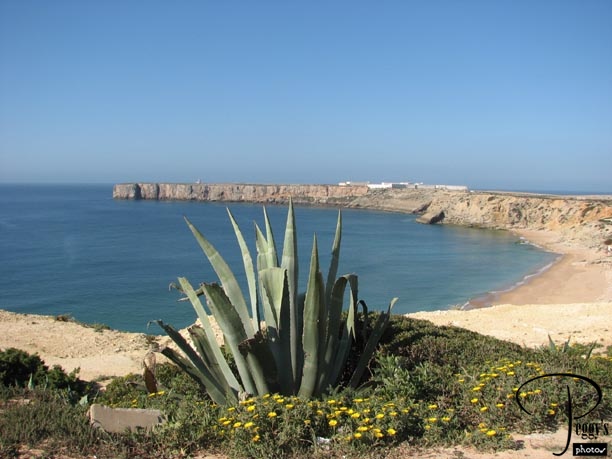
We stopped at a viewpoint for Cape Sagres. In the Middle Ages, this cape and another cape closeby, Cape St. Vincent, were considered to be “the end of the world” and where no man has gone further. However, in 1420, Prince Henry the Navigator built his school for navigators on Cape Sagres.

Cape Sagres
Cape Sagres
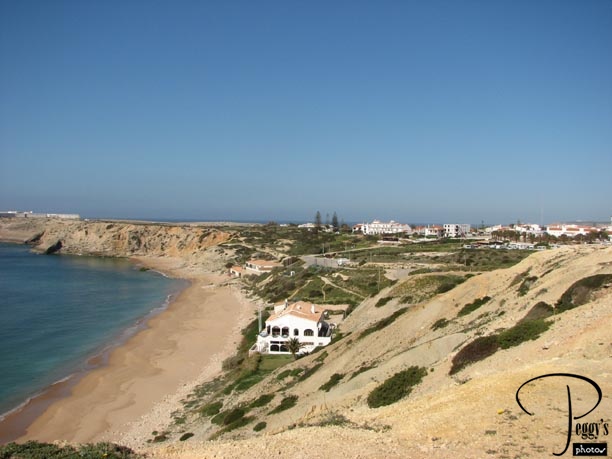
Another view of Cape Sagres.

Cape Sagres
Sagres
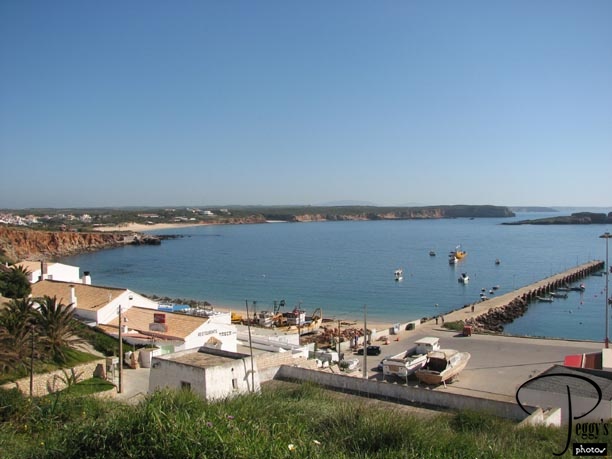
We stopped at the town of Sagres to view its harbor. It is believed that Henry the Navigator had his boats (caravals) built here and from here he sent his sailors to discover the rest of the world.

Sagres
Sagres
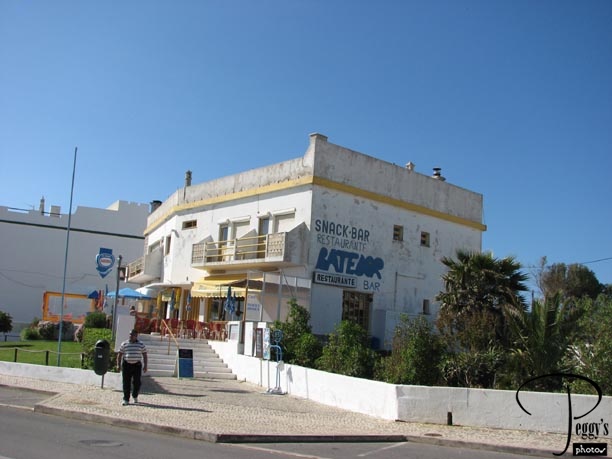
A restaurant at the viewpoint. That is Harry in the photo.

Sagres
Sagres
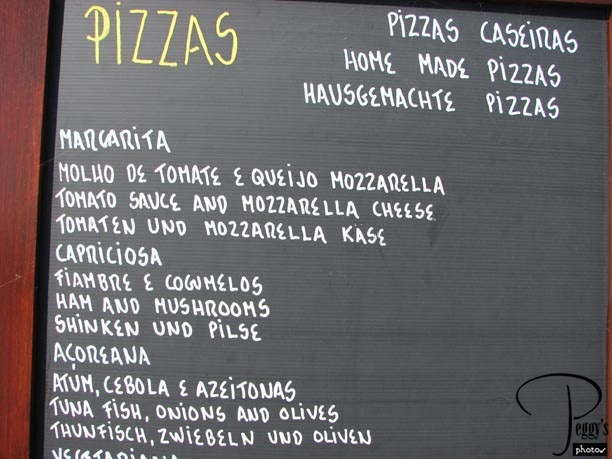
The restaurant offered some interesting pizzas: “capriciosa”––ham and mushroom, and “acoreana”––tuna fish, onions, and olives.

Sagres
Sagres
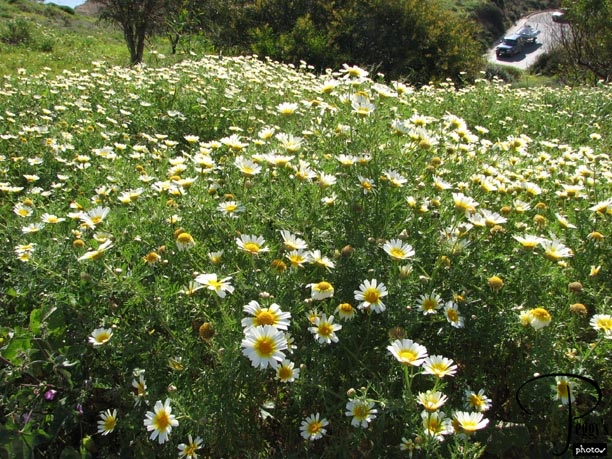
Some of the beautiful wildflowers at the viewpoint.

Sagres
Sagres
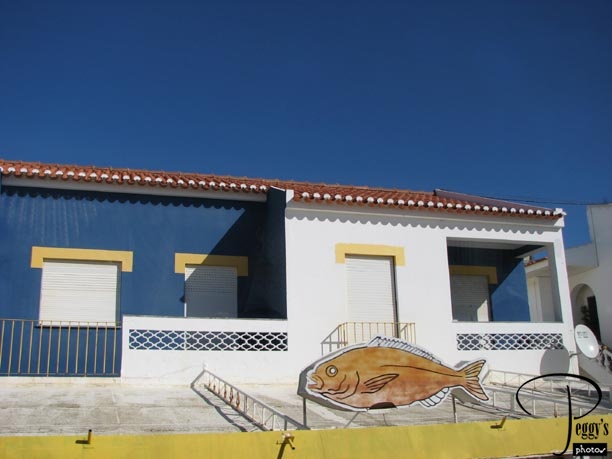
A brightly painted house at Sagres.

Sagres
Cape St. Vincent
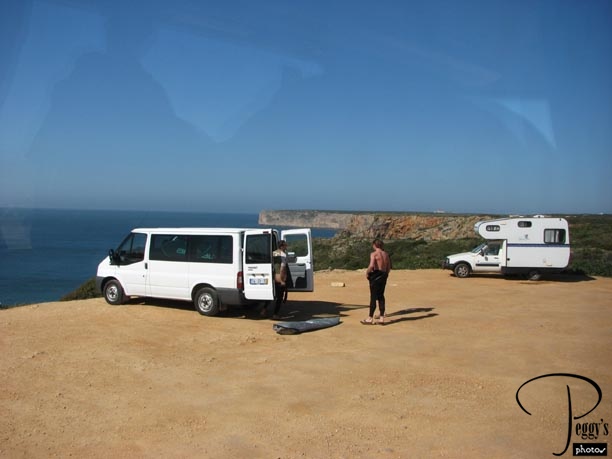
We stopped at this viewpoint of Cape St. Vincent. We did get an interesting view of a surfer trying very hard to pull up his wetsuit. You never know when a very big tour bus could pull into the viewpoint right behind you. His surfing buddies––there were two of them––were laughing too hard to help keep him from our view.

Cape St. Vincent
Cape St. Vincent
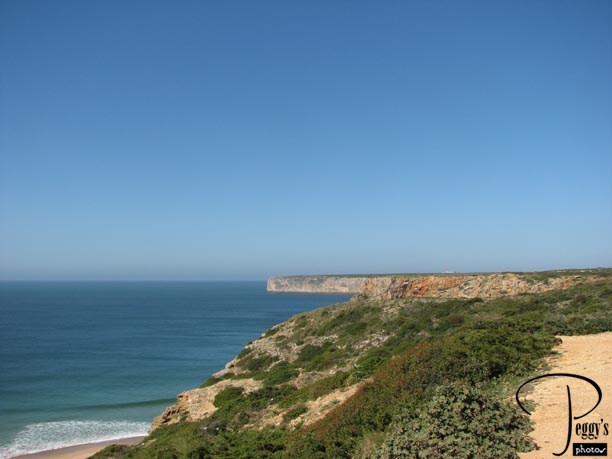
But we did get a good view also of Cape St. Vincent. There is a lighthouse at its end.

Cape St. Vincent
Cape St. Vincent
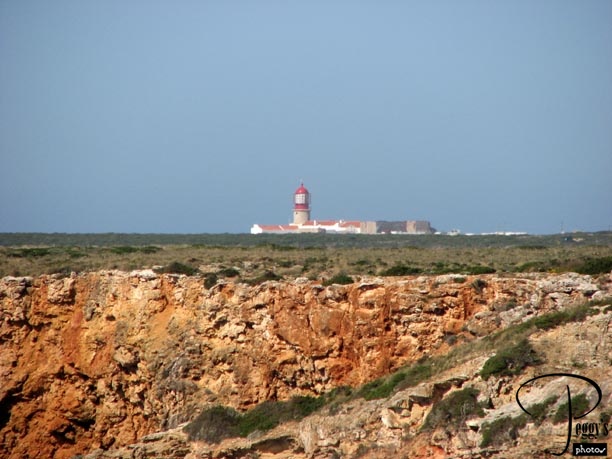
A closer–up view of the lighthouse.

Cape St. Vincent
Cape St. Vincent

We also could see the ruins of an old fort in this area.

Cape St. Vincent
Cape St. Vincent
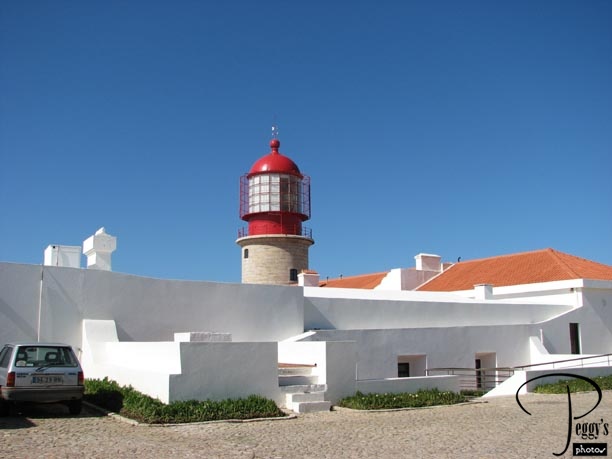
We drove to the lighthouse but it was closed to visitors.

Cape St. Vincent
Cape St. Vincent
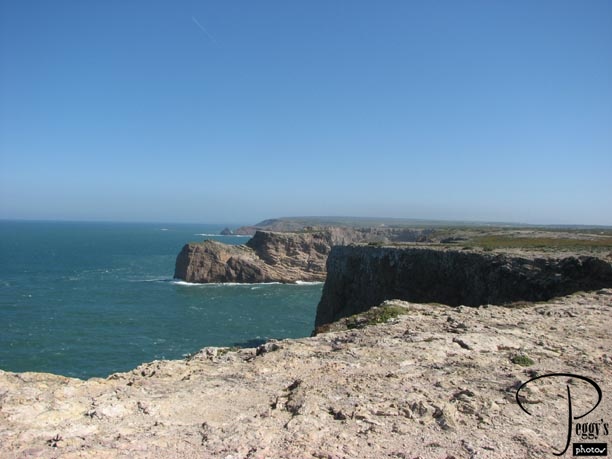
View of the rock formations of Cape St. Vincent.

Cape St. Vincent
Cape St. Vincent
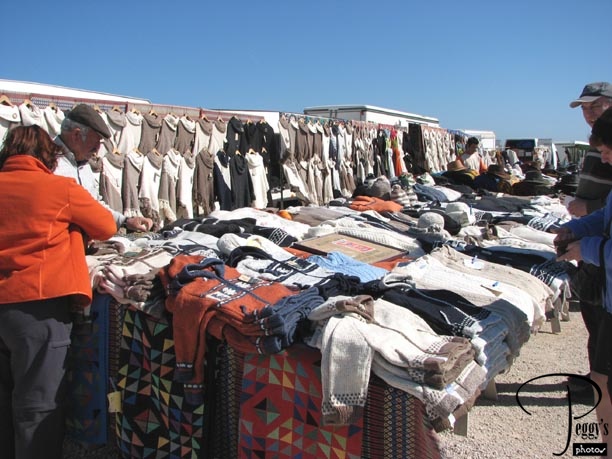
The area was also full of vendors, many selling some very nice pure wool sweaters at very reasonable prices. I bought a white wool cardigan. It will chilly at the cape and I definitely could use it here. I am sure that I will find use for it again on one of our extremely cold days in LA.

Cape St. Vincent
On the Road
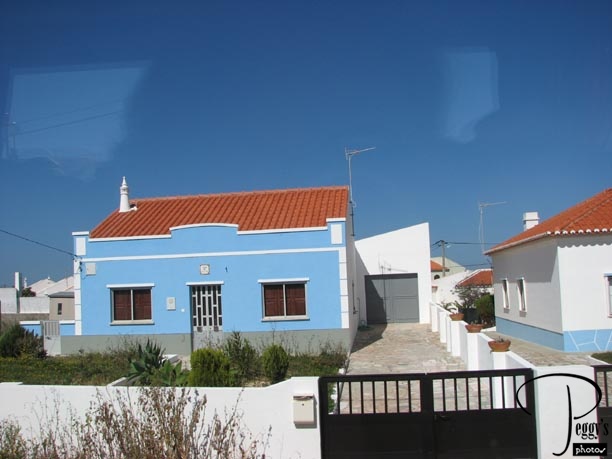
One thing that I really liked about Portugal was seeing so many different houses, such as this one.

On the Road
On the Road
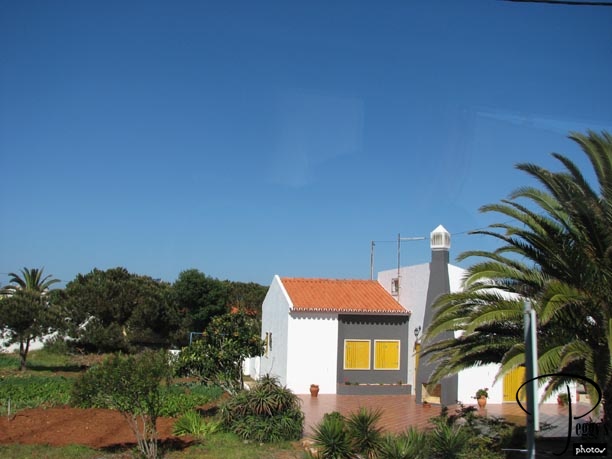
Another colorful house.

On the Road
On the Road
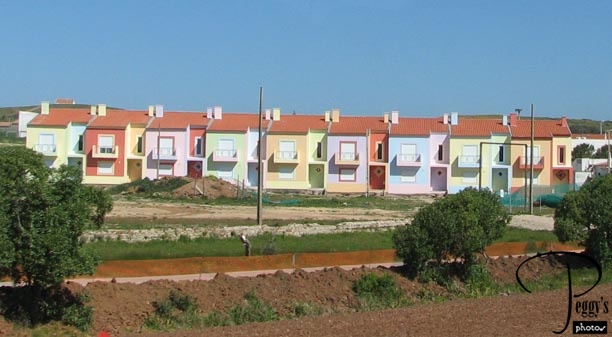
Colorful town homes.

On the Road
On the Road
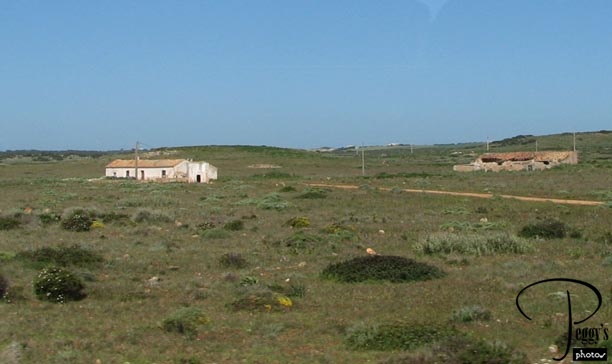
Farm houses.

On the Road
On the Road
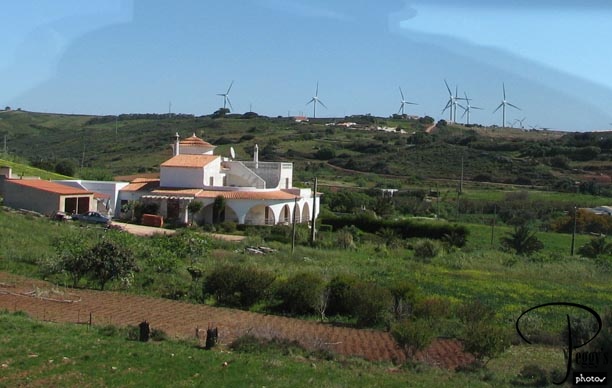
Newer house. Note the windmills on the hill. We saw these windmills on various hills in Portugal. Rui told us that 30% of the energy used in Portugal is now renewable, which is quite an amazing percentage compared to that in the U.S. However, for visitors such a “green” country can be a problem. Except in Lisbon, the only plug available in our hotel rooms to use to charge up batteries, cell phones, external hard drives, etc., was the one the TV was plugged into. Other sockets were either well hidden or screwed in with overplates. Taking along an international power strip may become a necessity for travelers.

On the Road
Lagos
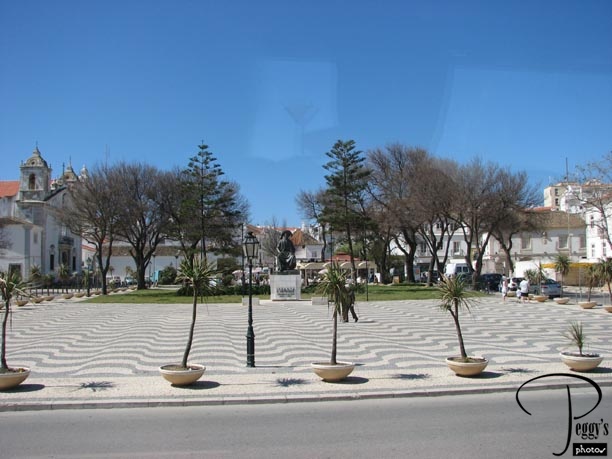
Entering Lagos. The statue is of Henry the Navigator. The section of Lagos is very interesting but I didn’t visit it today. However, I came back here two days later and did.

Lagos
Lagos
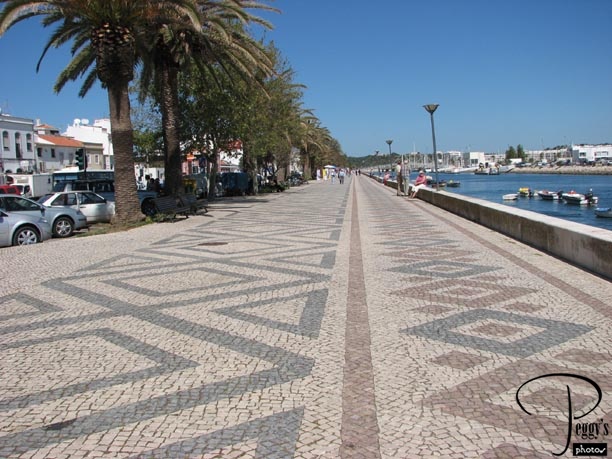
The boardwalk at Lagos. Along it are vendors lining up tourists to go on a boat cruise to sandstone rock formations outside the harbor. Renata and I each paid 10 euros for the boat trip and walked over to the bridge at the end of the boardwalk to cross over to where our cruise would start. Muriel and Bill, of our tour group, had spent some time on the Algarve before the Globus tour and had gone on this excursion and very highly recommended it.

Lagos
Lagos
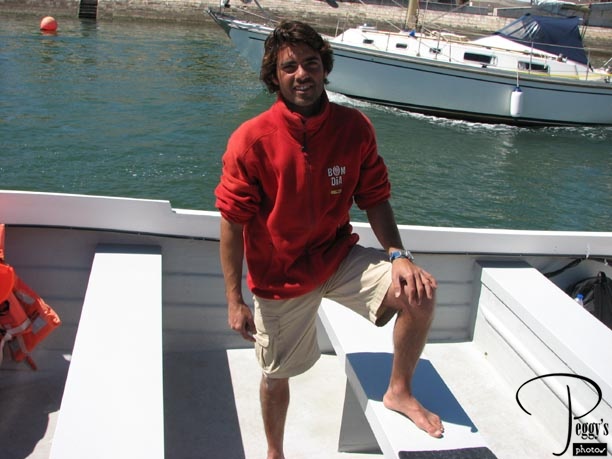
Of course, Renata and I were very pleased when we met the boat captain. The boat was called the “Bom Dia,” which means “good day” in Portuguese.

Lagos
Lagos
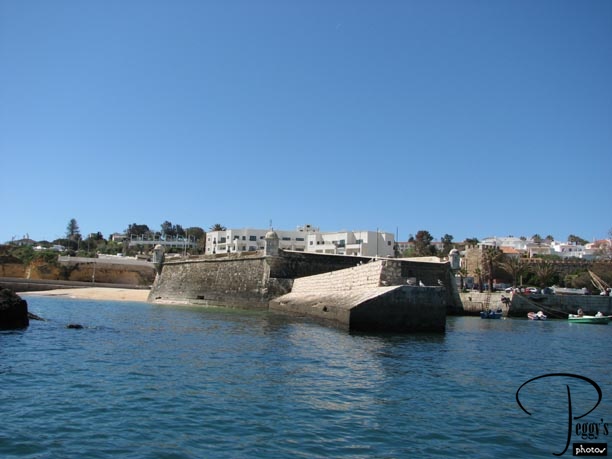
We had only a certain amount of time in Lagos. Renata wanted time to have lunch at a seafood restaurant. I wanted to have time to search for ceramic stores. So we arranged to take the one–hour cruise in 45 minutes. We left the harbor, passing this fort, at full–bore––quite a ride. (You can also pick up boats for the cruise near the fort.)

Lagos
Lagos
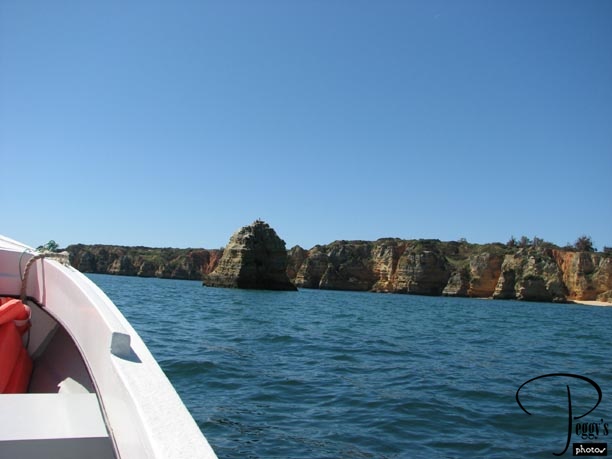
Approaching the sandstone rocks.

Lagos
Lagos
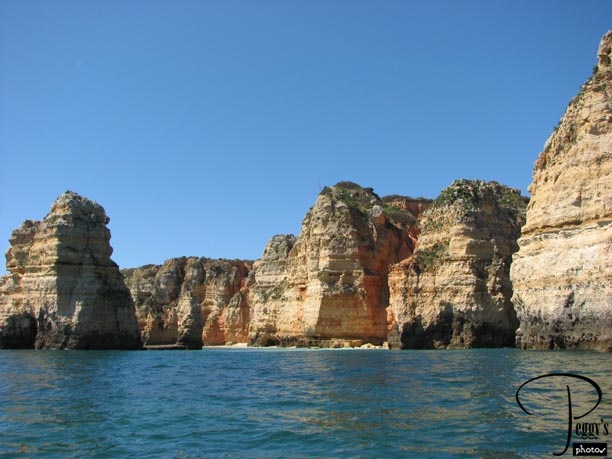
Closer to the rocks.

Lagos
Lagos
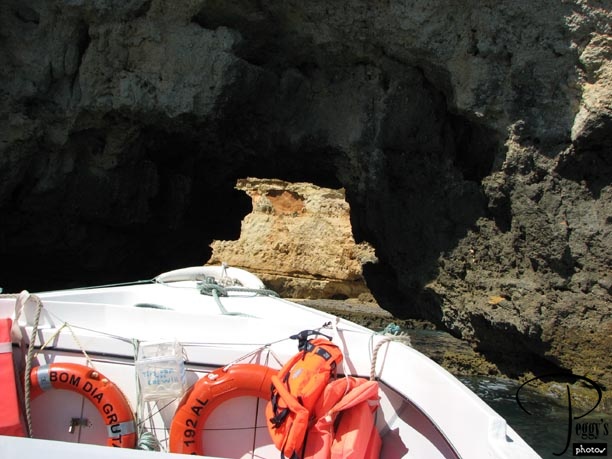
Approaching an opening in the rocks.

Lagos
Lagos
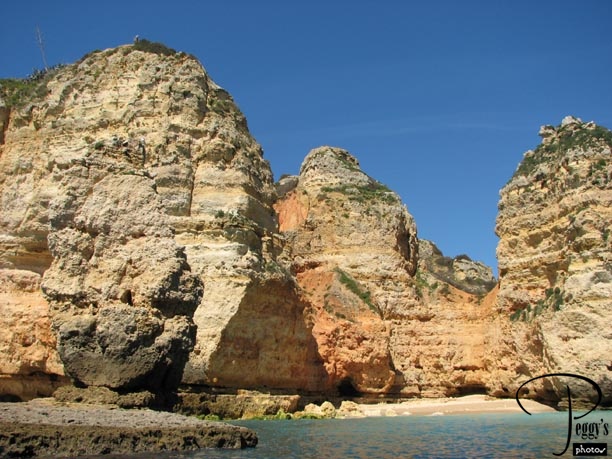
Through the opening.

Lagos
Lagos
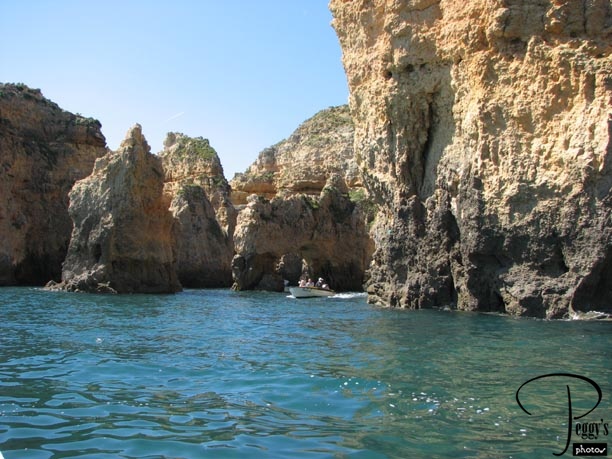
The water here was a beautiful shade of blue.

Lagos
Lagos
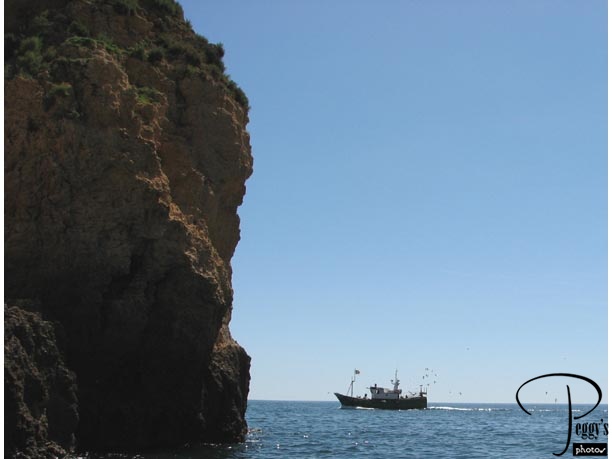
Out again in the open sea––a fishing boat coming back to the harbor.

Lagos
Lagos
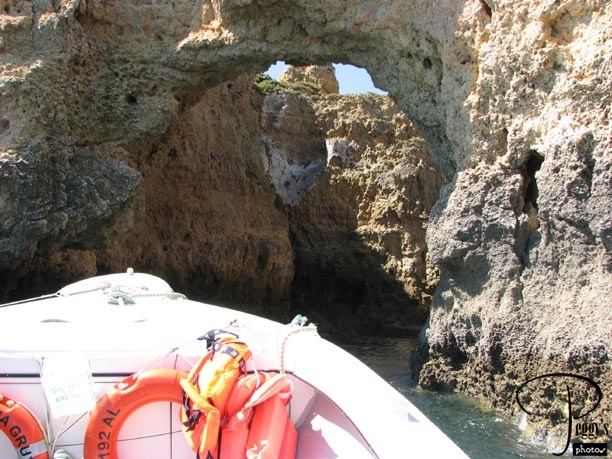
Going through another opening.

Lagos
Lagos
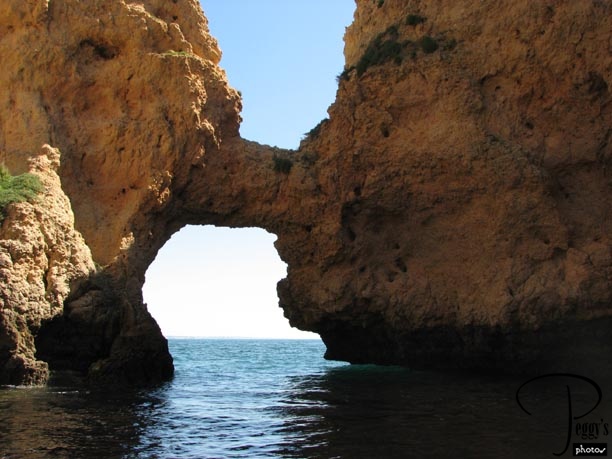
Elephant rock.

Lagos
Lagos
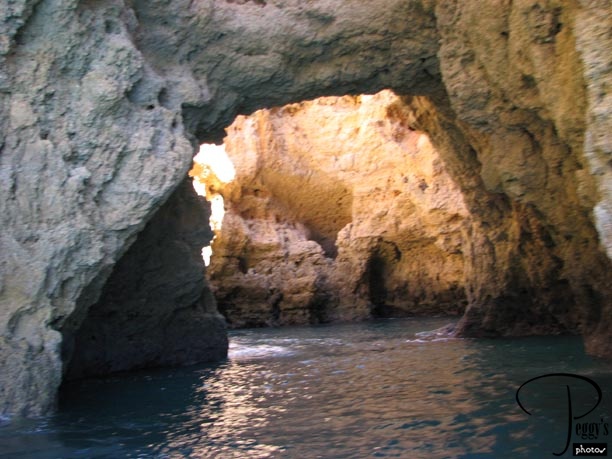
Inside one of the rock caves.

Lagos
Lagos
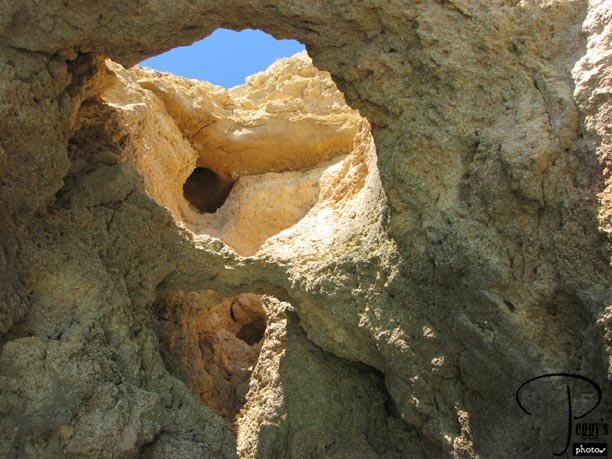
Sky view opening in the rocks. Each of the caves had a name such as the living room, the bedroom, the kitchen, etc. I do not remember the names given to each of the caves except for this one––the bathroom.

Lagos
Lagos
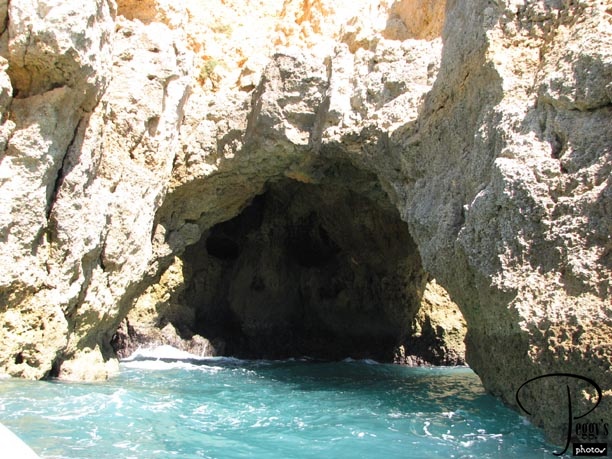
Another cave with beautiful blue water.

Lagos
Lagos
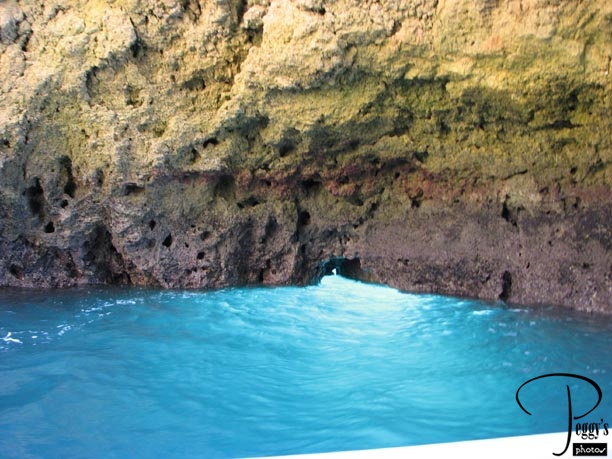
And an even more beautiful color.

Lagos
Lagos
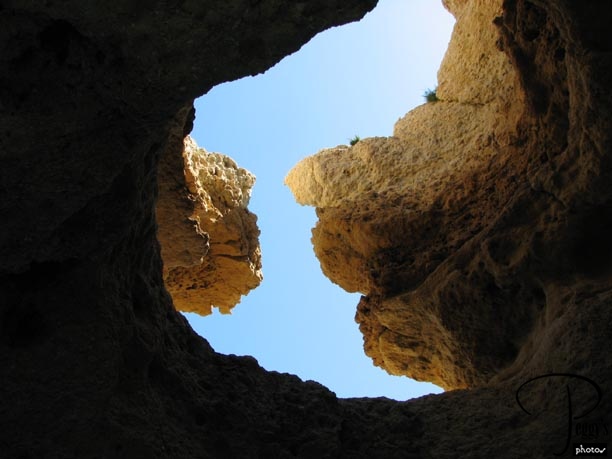
Another sky view opening in the rocks.

Lagos
Lagos
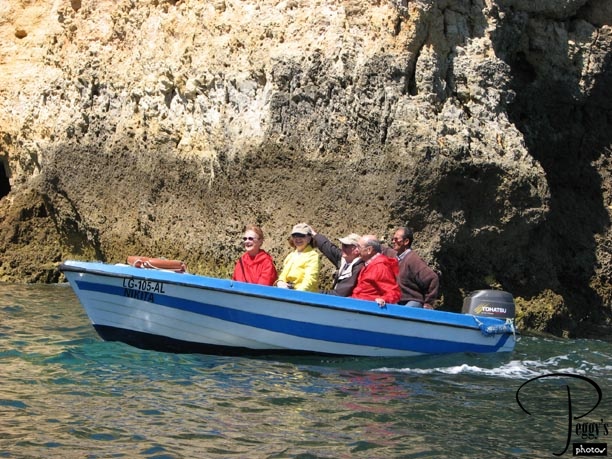
We passed Mary, Hal, Jim, and Eleanor on their way to the caves as we were leaving them.

Lagos
Lagos
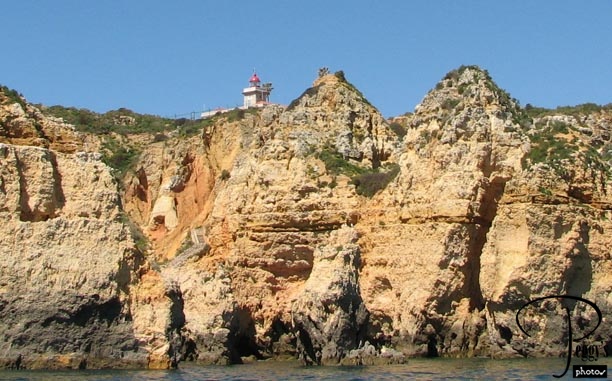
Lighthouse on top of the cliff seen on our return to the harbor.

Lagos
Lagos
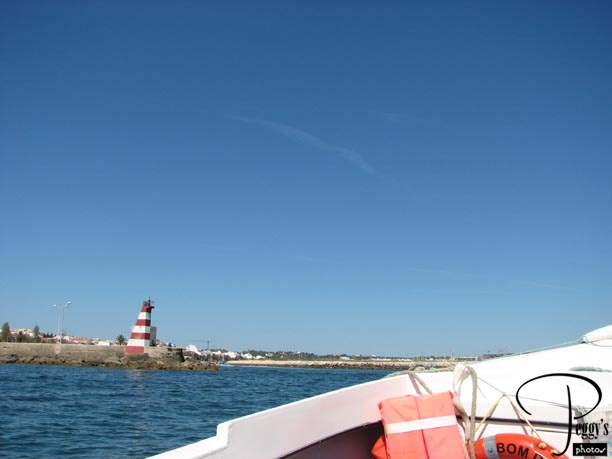
Coming back into the harbor at high speed.

Lagos
Lagos
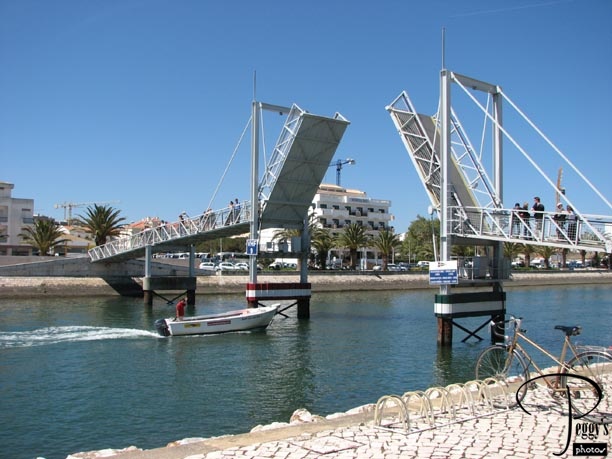
Our boat driver waving goodbye to us. We had to wait for the drawbridge to go down to cross the harbor. Muriel and Bill were correct––this was a great boat cruise to take.

Lagos
Lagos
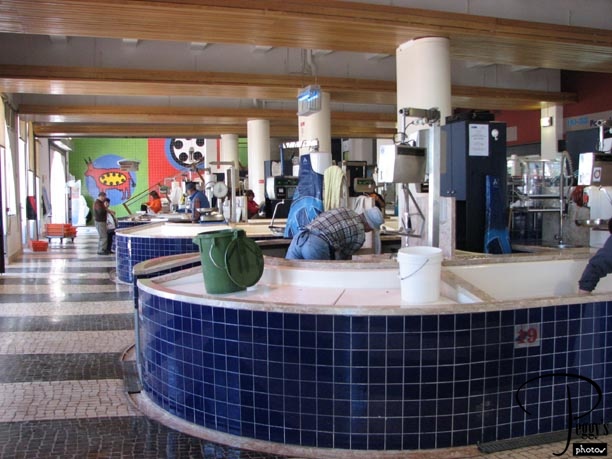
Renata went off to have her seafood restaurant lunch and I walked to the town center. Rui suggested that we can a look at the market. But it was just about closed up when I got there. It not only sells fish but vegetables, meat, etc.

Lagos
Lagos
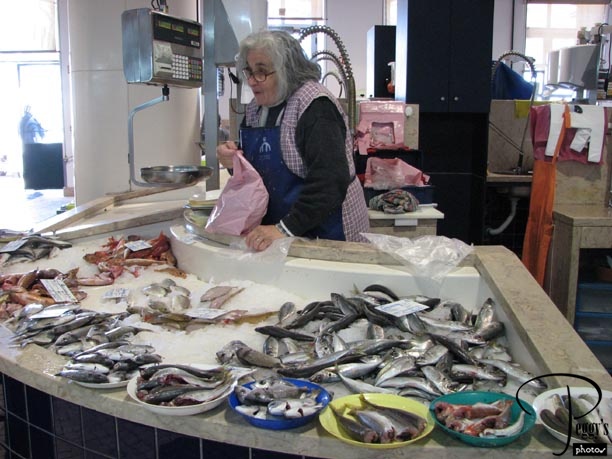
This vendor was still open. I think those are sardines.

Lagos
Lagos
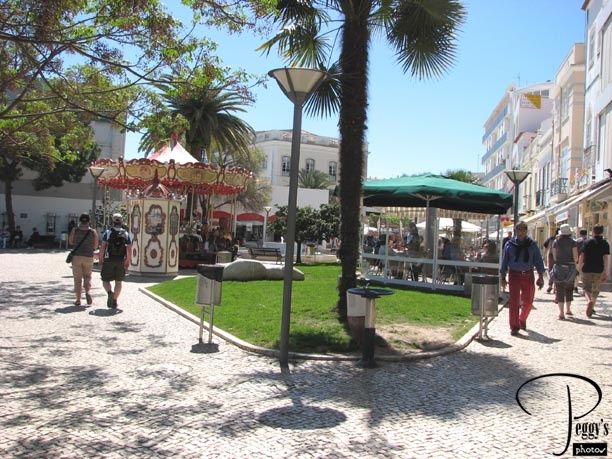
Entering the town center.

Lagos
Lagos
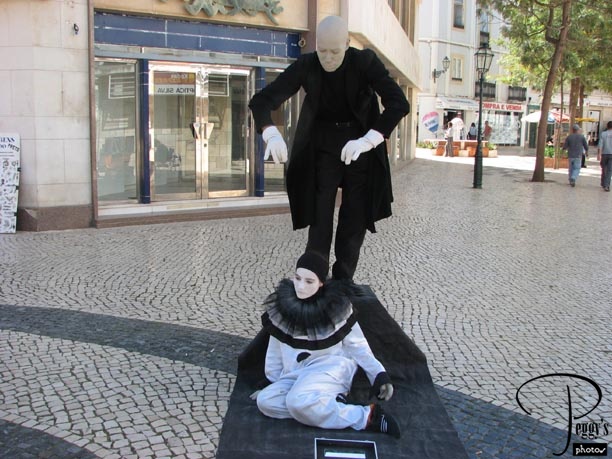
Street performers.

Lagos
Lagos
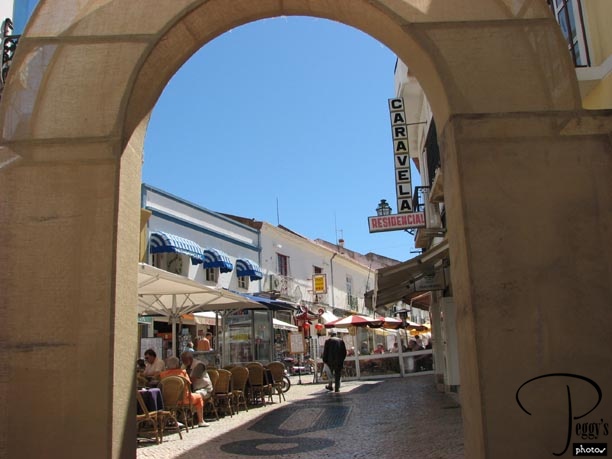
Farther along on my walk. Still no ceramic stores.

Lagos
Lagos
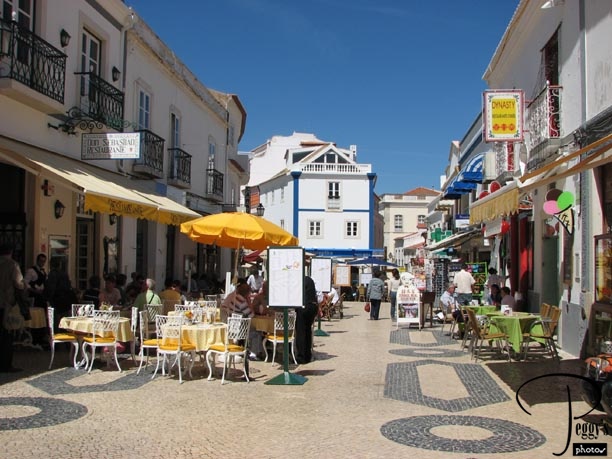
Pretty street.

Lagos
Lagos
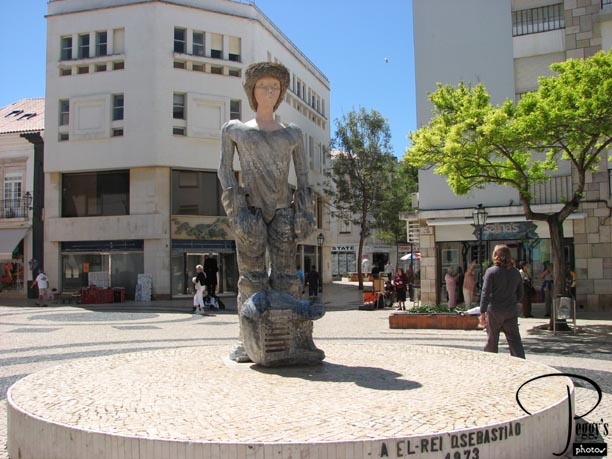
Interesting scuplture.

Lagos
Lagos
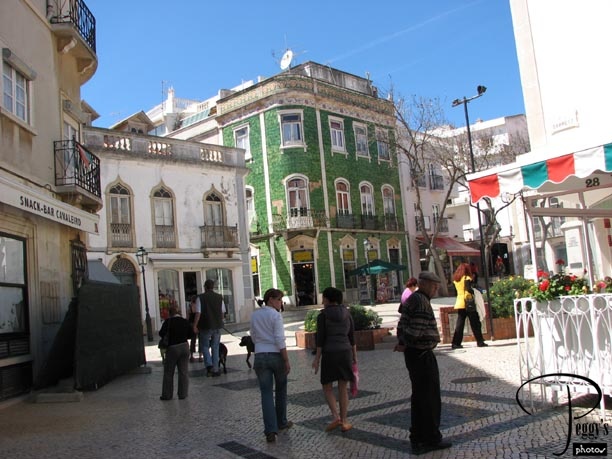
Interesting buildings––still no ceramic stores.

Lagos
Lagos
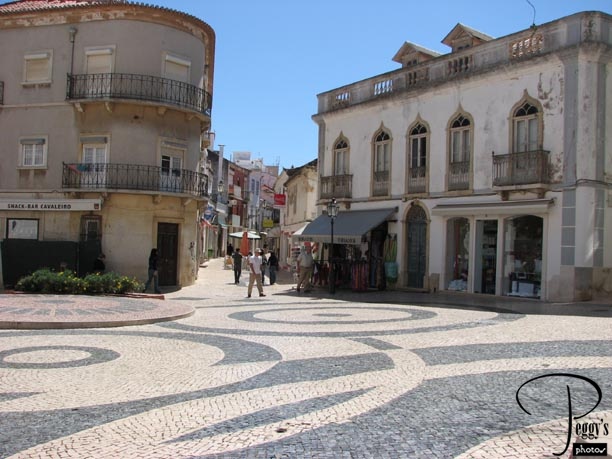
Farther on my walk. I didn’t find any stores selling ceramics, but Rui told me that if I had continued on one street where there was much construction I would have found one. Oh well. I had just enough time to get a pizza for lunch before we headed back to Vilamoura.

Lagos
Aldeia do Golf, Vilamoura
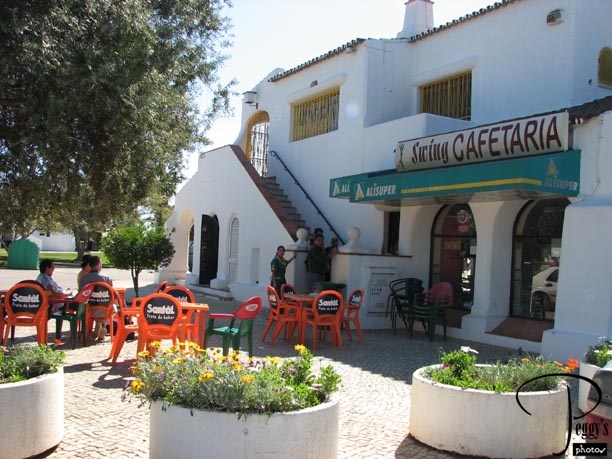
We still had some of the afternoon left for free time when we got back to Vilamoura, enough time to take a taxi to the Aldeia do Golf where my parents and my aunt and uncle had owned homes. My taxi driver knew where the development was so there was no problem getting to it. There was a cafeteria, a small supermercado (supermarket), and the manager’s office in this building near the entrance.

Aldeia do Golf, Vilamoura
Aldeia do Golf, Vilamoura
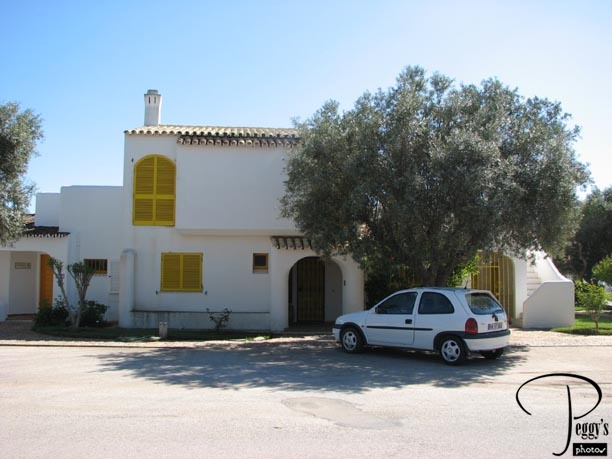
Not far from the entrance to the Aldeia do Golf, I found my parents’ home. How did I find it so easily? My cousin Meg had visited her parents and mine as well many times and she was able to give me very specific, easy–to–follow directions. This would be considered the rear of the house.

Aldeia do Golf, Vilamoura
Aldeia do Golf, Vilamoura
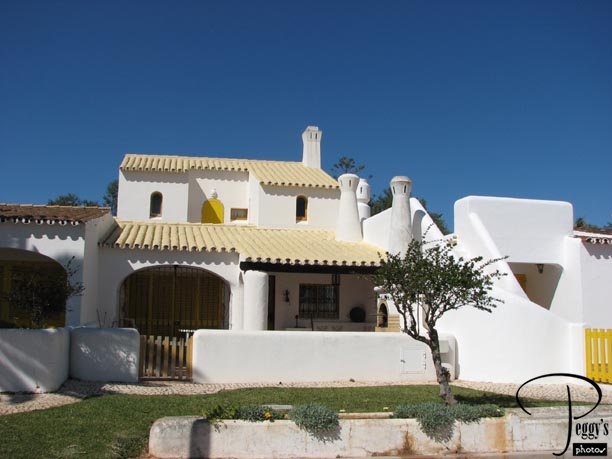
This is the front of the house. Yes, it looked just like the photos I had seen of it. My parents bought the house in 1971 and sold it in 1975, which brings up the most important event in modern Portuguese history––its Carnation Revolution of the 25 of April, 1974, which overthrew the Portuguese dictator Salazar. (It was named the Carnation Revolution because people placed red carnations in the barrels of the soldiers’ guns. No gun was fired during the revolution). But there was political unrest for a time after the revolution, with a possibility that the communists would take over Portugal. This is why my parents, with great regret, decided to sell their home.

Aldeia do Golf, Vilamoura
Aldeia do Golf, Vilamoura
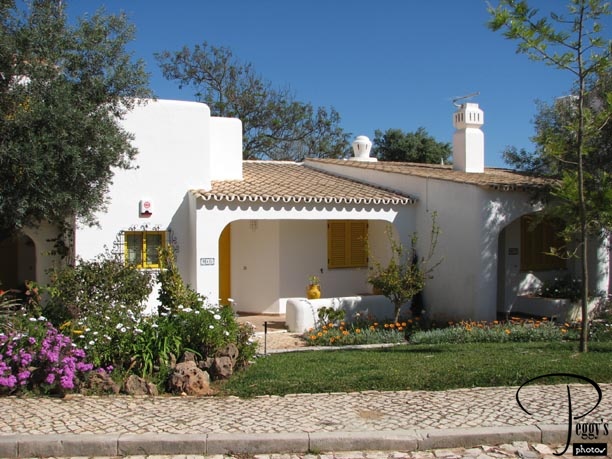
My aunt and uncle stayed through the unrest and lived here into the 2000s, playing golf at one of the courses every day. This was their house.

Aldeia do Golf, Vilamoura
Aldeia do Golf, Vilamoura
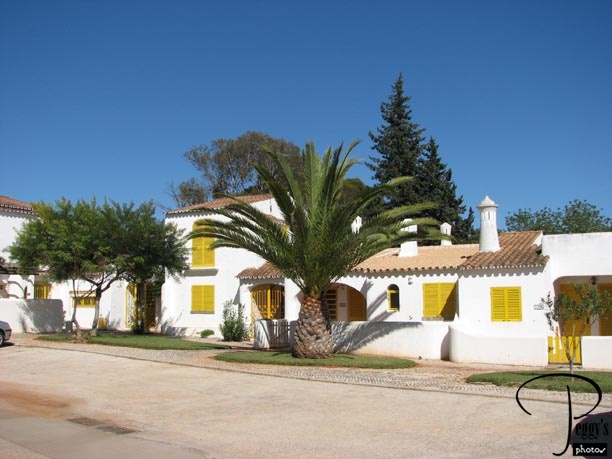
Aldeia do Golf is a beautiful, very well cared for development. Although having similar architecture and red tile roofs, white walls, yellow shutters, and the distinctive Algarve chimneys, each house is a bit different from each other.

Aldeia do Golf, Vilamoura
Aldeia do Golf, Vilamoura
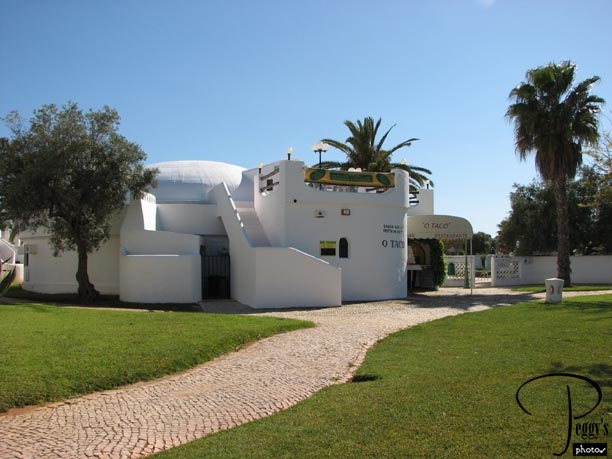
The complex even has its own restaurant, “O Taco.”

Aldeia do Golf, Vilamoura
Aldeia do Golf, Vilamoura
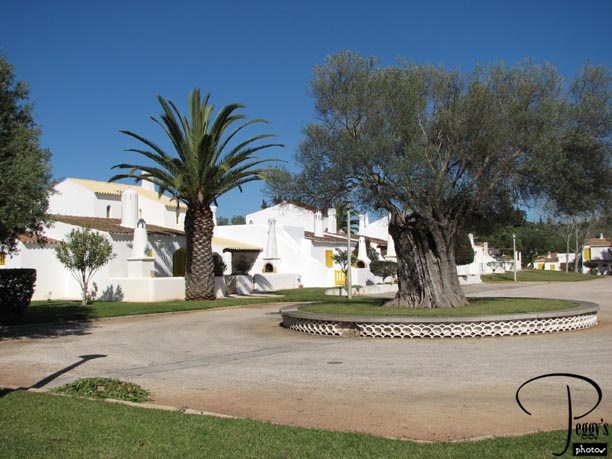
I walked around some more and tried to picture my parents and aunt and uncle living here. I wish I had been able to visit it many years ago.

Aldeia do Golf, Vilamoura
Vilamoura
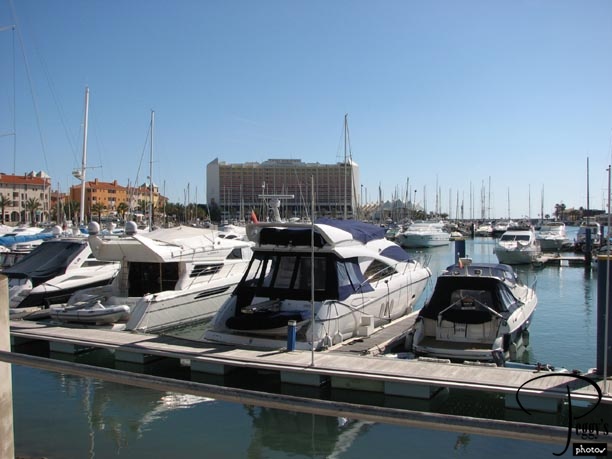
I had a taxi called and had it drop me off at the Marina.

Vilamoura
Vilamoura
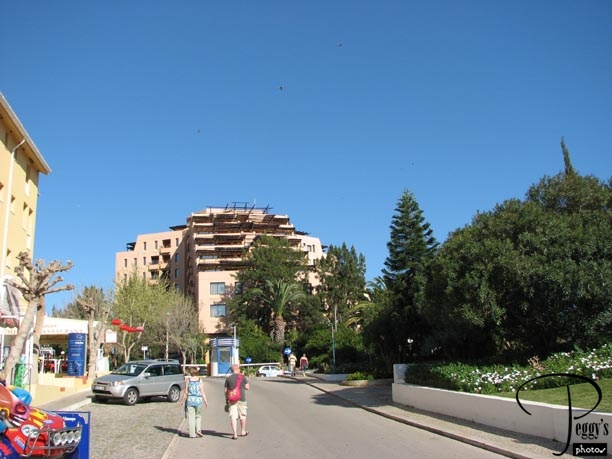
I wanted to locate the hotel that I was going to move to tomorrow. My tour group was going back to Lisbon to end the tour there but I was going to stay a couple of extra days in Vilamoura on my own. I was hesitant about spending extra money to stay at the Vilamoura Beach Hotel after I had read the reviews of it. The Dom Pedro Marina Hotel (photo) was much cheaper. On my way to locate the hotel, I passed by what is probably the only ceramic store in Vilamoura––finally, success and I bought presents there for both my family and for me. We ate dinner at the hotel this evening.
